Working with Nature heals; working against it brings profitable death
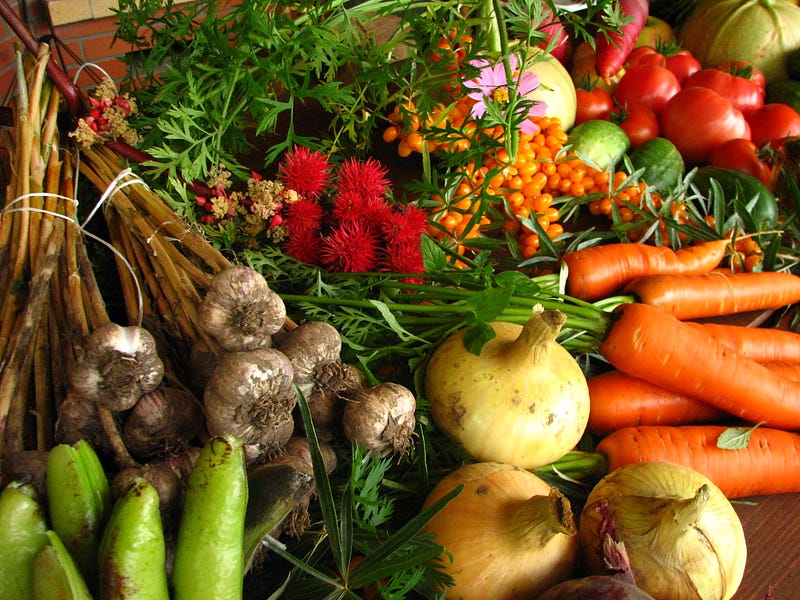
All life and all wealth comes from Earth. Everything we eat and drink, the places we live, the clothes we wear all originate in Nature. If we want Earth to keep giving, we can’t keep raping and taking from It. We must also give back. No matter how damaged it has become, Nature can regenerate itself, but it needs our help.
Indigenous people have been telling us to live in harmony with Nature ever since we colonized them, but colonists set up systems of private land ownership and a capitalist economy based on money instead. Now, sort of at the last moment, it seems people have realized their need to work with Nature instead of ruthlessly exploiting it. Regenerative farmers, foresters, gardeners, and others are taking effective actions to slow climate change, stop the spread of deserts, and return people to healthier, more connected lives, starting with our food.
Food is life
Food is our deepest connection with Earth. It comes from soil, which is the combined remains of living things that have come before, along with living microorganisms, and we return our bodies to the Earth daily through our bowels and our bladders and finally through burial. (At least, we did before modern plumbing and funeral practices.)
Farmers used to care for their soil so it could keep producing. They planted trees to hold the soil and cover crops to enrich and protect it. They kept animals, who aerated it with their hooves and fertilized it with their manure. They gave it seasons to lie fallow and recover from producing.
Those ways enhanced soil for thousands of years. It wasn’t until the 20th Century that money interests conquered farming and demanded maximum productivity at the lowest possible cost. They replaced the huge variety of natural grains with a few hybrids that gave high yields using lots of chemicals. They started planting every available space with salable product, used mechanical tractors that compressed the land, cut down trees, stopped using cover crops, and maximized growth with chemical fertilizers and pesticides.
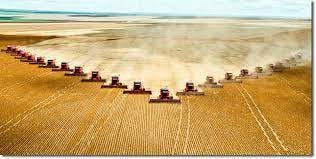
So, more food was grown for more people at lower prices, supporting a larger population with fewer farmers. Sounds good, right? But what about the soil?. The chemicals kill the fungi, insects, bacteria and birds, the web of life that is returned to us as food. Without the trees and cover crops, the soil dries out and blows away in the wind or washes away in heavy rain. Farming without giving back to the soil caused the American Dust Bowl in the 1930s and turns tens of thousands of acres of farmland to desert every year.
Indigenous farmers understood the need to cooperate with Nature. A-dae Romero-Briones, Director of Programs, Agriculture and Food Systems for the First Nations Development Institute says, “When we farm, we’re thinking about natural cycles, and how do we become more embedded into those natural systems. This is very much the opposite of what agricultural systems are today, which try to kill everything except the plant that you want to grow.”
The indigenous way, which many traditional farmers followed, was about maximizing life. Modern agriculture seeks only to maximize production. Farmers are forced by their economies to produce more at lower prices and often go broke.
Regenerative farming
Today some farmers are returning to ways that collaborate with Nature instead of exploiting it. Farmers are restoring land, growing healthier food, pulling carbon from the air and bringing water to thirsty land. These methods are called regenerative agriculture, farmer-managed natural regeneration (FMNR), biodynamic farming, or permaculture, and they are spreading around the world through books, teachers, web sites and videos. They borrow heavily from indigenous practices and also from science.
Each practice is a little different, but they share the goal of improving soil and environment, not maximizing yield of a single crop for profit. With these methods, soil gets more productive over time instead of wearing out.
Romero-Briones told Bioneers.org, “Our idea is that you absolutely need to be part of the natural cycles around you. You need to adjust to them in order to create not only a healthy food system, but also healthy people, a healthy environment, and a happy mental state.”
You can view the powerful effects of regenerative farming in a documentary called The Biggest Little Farm. The film follows John and Molly Chester, a young white couple from Santa Monica who set out to grow healthy food on 210 acres in Southern California. The land had been severely depleted by years of industrial agriculture. They knew next to nothing about farming when they started, but with mentoring, some investors, and a tremendous amount of work, they created an Eden amid the dry Southern California hills.
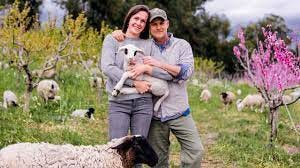
It wasn’t easy. Before they could plant crops, they had to turn the dry dirt back into living soil by planting cover crops and bringing in ducks, chickens, sheep and cows to fertilize the land. The new greenery brought all kinds of pests, but they worked with Nature to control them. No poisons.
Snails were eating their vegetables, while duck poop had caused a toxic algae bloom in their irrigation pond. So, they moved the ducks into the fields, and they ate the snails. Their poop fertilized the field. Pond restored, vegetables saved.
They grew beautiful organic fruit that attracted swarms of starlings, who took bites out of most of the fruit, rendering it unsaleable. John nailed up owl houses on their buildings; dozens of owls came and drove the starlings away. Coyotes were killing their chickens; gophers were eating their crops. They strengthened the chicken coops and brought bird-friendly guard dogs in to protect the chickens. Now the coyotes hunt down the gophers and keep them under control with the help of gopher snakes and birds of prey.
Their farm, called Apricot Lane Farms now produces large amounts of high-quality organic food and enriches the soil at the same time. They are not getting rich, but they are economically viable. They employ dozens of workers, make lots of connections with potential customers. They get additional labor from interns who come from around the world to help and learn.
When I first watched this film, I thought, ‘most people can’t do this, because they don’t have the resources.’ But then I realized, society has lots of money. Every farm in the world could be regenerative, and so could much currently un-farmed land, just using 10% of the resources presently devoted to war.
If you’re interested, a lot of investors are looking for regenerative projects to fund. Being “sustainable” or “regenerative” doesn’t mean withdrawing from society. It means connecting with society in new ways that focus on creating life, reconnecting farms to non-farm dwellers. So, Apricot Lane Farms gives tours to visitors, creates educational programs and children’s books about how to farm with Nature.
Life Vs. Production
How does maximizing life affect business plans? Before they had any crops, Apricot Lanes began with free-range chickens, running around eating bugs and seeds, laying delicious eggs. They sold out dozens of cases in hours at every delivery. Vendors asked if they could get larger quantities.
The Chesters replied, ‘No. The chickens wouldn’t have enough natural food to eat. They’d have to eat grain (like all commercially-raised chickens,) and the eggs wouldn’t be as nutritious or taste as good. More important, the land would be degraded and couldn’t keep producing.’
That’s how food systems should work. What maximizes life, not how can we make the most money. Land needs animals on it to thrive. But too many animals grazing too small of an area turn land to desert. Growing only one variety of plant in a field diminishes the life of the field and the nutritional quality of the crop, though quantity may increase for a while.
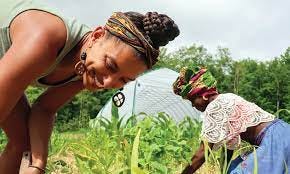
Permaculture and biodynamics are being widely used in India, as you can see in these videos. These farmers are preserving Indian varieties of rice and farming practices against agribusiness attempts to force them to use patented hybrid rice and agricultural chemicals.
Farmer-managed natural restoration is taking hold in Africa. Heat, drought and poverty make things much harder there, but it’s really inspiring what these farmers accomplish in Niger, Zimbabwe, Ethiopia, Rwanda, and elsewhere. According to an article by Chris Reij of the World Resource Institute, “Northern Ethiopia is now greener than it has ever been during the last 145 years,” and “Human investments have overridden the impacts of climate change.”
Life vs. greed, not socialism vs. capitalism
The question is not socialism vs. capitalism. Capitalism’s essence is turning Nature into products and selling more and more of it for private profit, so it is inherently anti-Life and unsustainable. But authoritarian socialism can be just as bad. Chairman Mao, one of the greatest of all socialists, said “Man must conquer Nature.” He wanted to help people at the expense of Nature. The result was a series of massive dams that flooded whole districts, drove out indigenous people above the dams and disrupted agriculture below them.
How do we maximize life? Others know far better than I, but I feel we need to connect with Nature as closely as possible. More of us need to farm or garden. People like the Black women in this article are farming places that weren’t growing food before. If you can’t start your own regenerative farm, can you join a group that’s doing it, or invest in such a farm, or buy their produce? We can also plant trees, or support people who do.
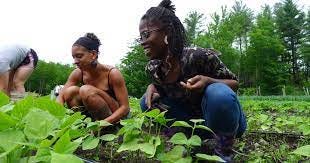
Politically, we can stop using chemicals and advocate for keeping chemicals out of food and water. Support indigenous movements fighting for water and against oil pipelines and wells. Support giving land back to indigenous people who know how to live on it. Cut way down on emission of greenhouse gases.
Certainly, none of these changes will help if governments keep fighting wars. If capitalism takes us into a nuclear war, all bets are off. War is hugely destructive of Nature, and even in peacetime, the military is the world’s biggest polluter.
But there is still hope. Though many scientists say the greenhouse effect is too far gone and we are doomed, I remember that Nature, through soil, trees, shellfish and swamps can remove carbon from the air and reduce global warming. It can bring water to the surface and regenerate dead land if people cooperate. We need to use our science, technology, our hearts and and labor to help it. Indigenous people know how to do this and we can follow their leadership. If we commit to working with Nature instead of against it, if we make Earth sacred again, we may still survive current catastrophes.
— — — — — — — — —
Thanks for reading! Please comment, share, or steal. Follow me on Twitter, on Facebook or on Medium.com. Hire me for freelancing, editing, or tutoring on Linked In

THANK YOU! David. Wonderful essay with rich set of links. A great local resource is SF Permaculture https://www.permaculture-sf.org/
I took classes with them years ago and worked on the 18th Garden.